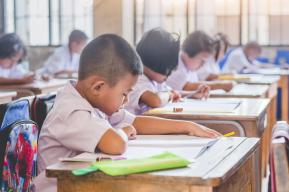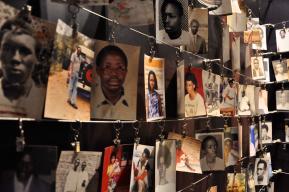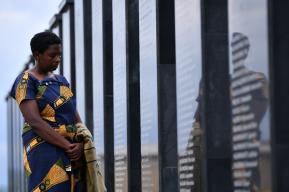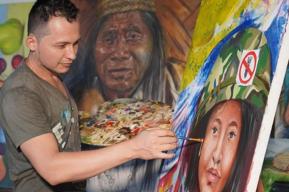News
Shedding light on the Roma genocide: Take part in the #ProtectTheFacts campaign

Karl Stojka was 12 when the Nazis initiated mass deportations of thousands of Austrian Sinti and Roma to Auschwitz-Birkenau in 1943. He was arrested at his school right in the middle of a lesson and sent to the concentration camp with his family. There, he was known as “Z-5742”, a serial number tattooed on his left forearm. Z stood for “Zigeuner”, or “Gypsy” in German. Karl was assigned to work in the canteen, which allowed him to occasionally sneak some leftovers off the table to his family – a huge relief amidst starvation. When the news about the Soviet army approaching started to spread in the summer of 1944, Karl, his mother, brother and sisters – those deemed fit for continuous labour to exhaustion – were deported to other camps.
We know the story of Karl and his family because, on 2 August 1944, they were fortunate to escape death. That was the day the so-called “Gypsy family camp” in Auschwitz-Birkenau ceased to exist – and not because it had been liberated. That night, thousands of its Roma and Sinti prisoners never were able to experience freedom again because they were killed in the camp’s gas chambers. Karl’s uncle Lulo, his wife, and three children were among these victims.
Some 500,000 Roma people were systematically persecuted and murdered by the Nazi regime, its allies and collaborators during the Second World War. Many more were subjected to criminal medical experiments, forced labour and torture. The Roma genocide is still under-researched and widely unknown by the general public, often leading to denial and distortion of facts about this dark chapter of history. For decades following the war, the Roma were not recognized as victims of Nazi persecution and the crimes committed against them remained unacknowledged.
After the liberation, Karl Stojka and his sister Ceija both became famous artists. They used their visibility to actively campaign for the importance of learning and acknowledging the facts about the crimes perpetrated against Roma and Sinti communities during World War II. Along with other activists, they also reminded that the Roma genocide didn’t spring out of nowhere: a centuries-long history of anti-Roma racism and discrimination could have laid the grounds for these atrocities.
Countering the denial and distortion of the Roma Genocide
Today, the Roma are Europe’s largest minority. They continue to face racism and human rights violations. A recent survey conducted among Roma people in 10 European countries revealed that one in four reports having experienced discrimination in various areas of life based on their Roma identity. Moreover, one in five Roma children face hate-motivated bullying and harassment while in school.
“I’m afraid that Europe is forgetting its past and that Auschwitz is only sleeping”, said Ceija Stojka.
Multiple governments and international organizations have adopted 2 August to pay tribute to the memory of “forgotten victims” – hundreds of thousands of Roma murdered in Europe during the Nazi era.
To counter the denial and distortion of the Roma genocide, UNESCO have partnered with the International Holocaust Remembrance Alliance (IHRA), the European Commission, the United Nations, and the Organization for Security and Cooperation in Europe Office for Democratic Institutions and Human Rights (OSCE/ODIHR) to launch a new round of their ongoing global digital campaign #ProtectTheFacts. The campaign features resources such as archives, testimonies of Roma victims and survivors, and information about the history of the Roma genocide.
“Building societies that value human dignity requires confronting unsettling truths about the past,” said Chistopher Castle, Director of the Division for Peace and Sustainable Development at UNESCO. “Amidst rising hate and increasing political polarization, teaching and learning the facts about the unimaginable horrors inflicted on Roma people by the Nazi regime, its allies and collaborators is not just our duty to the victims and survivors. It becomes all the more important if we want to build the defences of current and future generations against such atrocities.”
- Learn about #ProtectTheFacts campaign
- Engage on social media
- UNESCO’s work in education about the Holocaust and genocide







